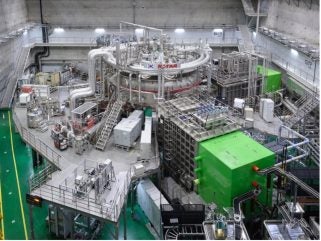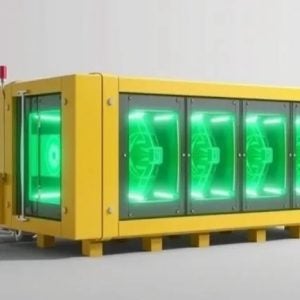
The South Korean government will invest KRW1,200bn ($866m) to develop fusion reactors and related infrastructure, local media reported. This was announced by the Ministry of Science & ICT at a meeting of the National Nuclear Fusion Committee chaired by Minister Lee Jong Ho. The policy goal is to secure the ability to take the early lead in the commercial application of fusion energy.
The investment over 10 years starting in 2026 aims to develop nuclear fusion reactor components through a public-private partnership and establish a private-led industrial fusion energy ecosystem.
The government will promote a project for innovating fusion engineering that combines the outstanding capacities of private engineering and public fusion technology. It will also support the development of core components such as diverters and breeding blankets. Artificial intelligence will be used to develop the standard operating technology for the reactors and technology to monitor their operations based on the Internet of Things.
By utilising the technology gained through the planning and construction of KSTAR – the Korea Superconducting Tokamak Advanced Research – and a network abroad formed through joint global research such as the International Thermonuclear Experimental Reactor (ITER), the Ministry will support overseas construction projects.
Korea’s universities will either launch or expand nuclear fusion majors and subjects and boost education training linked to ITER. This is intended to secure and develop highly skilled personnel to respond to rising demand for workers in the sector. Improvements to the personnel cost system will be studied and incentives for host institutions will seek to attract outstanding foreign researchers to Korea.
“Fusion energy is a solution to energy problems and rising demand for electricity, so only countries with the technology to create such energy can lead the global energy market,” Minister Lee said. “We will secure leadership in the competition for energy hegemony by acquiring fusion energy in the early stage by shifting the focus of research and development to public-private cooperation and reinforcing the nuclear fusion ecosystem.”
If the technology development is successful, the government hopes to build a small pilot reactor with a generation capacity of 100 megawatts in the 2030s for operation in the 2040s. The goal is to develop the technology for nuclear fusion reactors more advanced than KSTAR and ITER.
Global fusion energy research, which has primarily been led by the public sector, has recently seen a shift with private start-ups seeking to market the technology in the 2030s. “New startups in the nuclear fusion sector, such as EnableFusion, have been emerging as of late in Korea,” said Oh Yeong-kook, President of the Korea Institute of Fusion Energy.
“As many large- and small-sized companies involved in the KSTAR and ITER projects have accumulated experience, we plan to create an ecosystem for fusion energy together with the private sector, universities and research institutes,” said Oh.
“Although Korea has been aleading player with the KSTAR project and involvement in the ITER programme, the competition is getting fiercer with new start-ups … appearing in the US, UK and China. Therefore, without a public-private partnership, we may fall behind in the global race,” said Park Sang-wook, Senior Presidential Secretary for Science & Technology at the Presidential Office.






